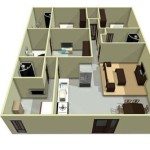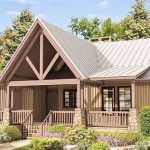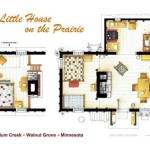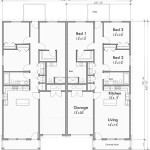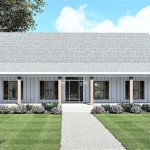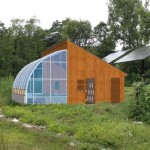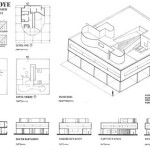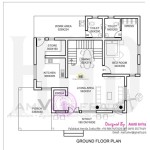Plans For Dog House: A Comprehensive Guide
Providing shelter for a canine companion is a fundamental aspect of responsible pet ownership. A dog house offers protection from the elements, a secure retreat, and a sense of personal space. Constructing a dog house requires careful planning, tailored to the specific needs of the dog and the prevailing environmental conditions. This article outlines essential considerations and key aspects of developing robust plans for a suitable dog house.
Understanding the Dog's Needs
The foundation of any effective dog house plan lies in a thorough understanding of the dog's specific requirements. This includes considering the breed, size, age, and overall health of the animal. Larger breeds, naturally, necessitate larger dog houses, while smaller breeds require less space. Similarly, senior dogs or dogs with joint problems might require a design that minimizes the need to step up and into the structure. The breed’s coat type and tolerance to temperature extremes also influence the insulation and ventilation needs of the dog house.
Accurate measurements are paramount. Measure the dog's height from the ground to the top of its head, as well as its length from nose to tail base, while standing naturally. The dog house should be tall enough for the dog to stand up comfortably and long enough for it to turn around easily. However, excessively large spaces can be detrimental in colder climates, as they are more difficult for the dog to warm with its body heat. A snug, but not cramped, fit is ideal.
Observe the dog's sleeping habits. Does it prefer to curl up tightly, or does it stretch out fully? This will further inform the optimal dimensions of the interior space. Furthermore, consider the dog’s temperament. A timid dog might prefer a dog house with a smaller entrance, offering a greater sense of security.
Material Selection and Environmental Considerations
The choice of materials significantly impacts the durability, insulation, and overall comfort of the dog house. Wood is a common and readily available option, offering good insulation and a natural aesthetic. Pressure-treated lumber is resistant to rot and insect infestation, but it's crucial to ensure it's thoroughly dried and sealed to avoid any potential leaching of chemicals that could harm the dog. Cedar and redwood are naturally resistant to decay, making them suitable choices, but they are typically more expensive.
Plywood, particularly exterior-grade plywood, can be used for the walls and roof, providing a sturdy and weather-resistant shell. Avoid using particleboard or MDF, as these materials swell and disintegrate when exposed to moisture. Insulation is crucial in regions with extreme temperatures. Rigid foam insulation board provides excellent thermal resistance and is easy to install. Batt insulation can also be used, but it must be properly protected from moisture.
The roof design should effectively shed water and snow. A sloped roof is generally preferred, directing water away from the entrance. Overhanging eaves provide additional protection from rain and sun. The floor of the dog house should be elevated slightly above the ground to prevent moisture from seeping in. A solid, durable floor made of plywood or treated lumber is recommended.
Consider the local climate when selecting materials and designing the ventilation. In hotter climates, adequate ventilation is essential to prevent overheating. Vents near the roofline allow hot air to escape. In colder climates, insulation is a priority, and the entrance should be positioned to minimize drafts. A flap door made of heavy-duty plastic or canvas can help to further insulate the interior. The orientation of the dog house also matters. In colder regions, orienting the entrance away from prevailing winds can reduce heat loss. In hotter regions, orienting the entrance to face away from the afternoon sun can help to keep the interior cooler.
Furthermore, consider the aesthetic integration of the dog house into the surrounding landscape. The design should complement the existing architecture and blend seamlessly into the outdoor environment. This can involve matching the roof style, using similar materials, or incorporating landscaping elements around the dog house.
Detailed Construction Planning and Documentation
Once the dog's needs and environmental factors are considered, the next step is to develop detailed construction plans. This involves creating a scaled drawing of the dog house, including all dimensions, materials, and construction details. The plans should be clear, concise, and easy to follow. A detailed cut list of all lumber and materials is essential for efficient construction.
The plans should specify the type and size of fasteners to be used, as well as the order of assembly. It's important to choose durable, weather-resistant fasteners that will withstand the elements. Consider using galvanized screws or stainless steel nails to prevent corrosion. The plans should also indicate how to properly seal all joints and seams to prevent water infiltration.
Include detailed instructions for constructing the frame, walls, roof, and floor. The frame provides the structural support for the dog house, so it must be strong and well-constructed. The walls should be securely attached to the frame, and the roof should be properly sloped to shed water. The floor should be level and stable.
The entrance should be carefully designed to be both functional and safe. The size of the entrance should be large enough for the dog to easily enter and exit, but not so large that it allows excessive drafts. The edges of the entrance should be smooth and rounded to prevent injury. A removable or hinged roof can provide easy access for cleaning and maintenance.
Safety is paramount throughout the planning and construction process. Ensure that all materials are non-toxic and safe for animals. Avoid using nails or screws that could protrude into the interior of the dog house. Sand all edges and surfaces to remove splinters or sharp edges. Regularly check the dog house for any signs of damage or wear and tear, and make repairs as needed.
The plans must also account for proper drainage to prevent the accumulation of water around the dog house. This can involve grading the surrounding area to direct water away from the structure or installing a drainage system. A layer of gravel or mulch around the base of the dog house can also help to improve drainage and prevent mud.
Consider adding personal touches to the dog house to make it more comfortable and inviting for the dog. This could include adding a soft bedding pad, a favorite toy, or a water bowl. The dog house should be a place where the dog feels safe, secure, and comfortable.
Ultimately, well-defined plans for a dog house are crucial for ensuring a safe, comfortable, and durable shelter for a canine companion. Consideration of the dog's specific needs, environmental factors, and meticulous construction planning are essential for creating a dog house that will provide years of reliable protection and comfort.

Luxury Plans For Dog House Check More At Http Www Jnnsysy Com Easy Diy

Dog House Plans Free Diy Projects Construct101 Wooden

13 Diy Doghouse Plans And Ideas The House Of Wood

Cold Weather Dog House Plans Bradshomefurnishings Winter Insulated Diy

Large Dog House Plans Free Construct101

Build A Cedar Doghouse

13 Diy Doghouse Plans And Ideas The House Of Wood
:strip_icc()/Beautiful-Pallet-Dog-House-with-Veranda-1-5a202f90494ec90037893a82.jpg?strip=all)
14 Free Diy Dog House Plans Anyone Can Build

Traditional Dog House Plan Bradshaw

Extra Large Dog House Plans Israel

